2nd Generation Gems
Top 10 Overlooked Games from the 2nd Generation of Video Games!
The unprecedented popularity of the Atari 2600 was the first real indicator of how much money could be made in the video game industry. Everyone wanted a piece of the pie, and countless companies raced to the market to unleash torrents of garbage. By 1983, the industry was overrun with shovelware and gamers were overwhelmed by choice. The lack of quality control caused the entire market to collapse under its own weight, and many great games were ignored as a result. This list looks at some of the games that could have been considered classics under different circumstances. For the purpose of this list, I’ve chosen to disregard any game that was part of a series or based on a licensed property. If a game was given a sequel, it will also be discounted since it basically had a second chance at life. To prevent redundancy, any game that has already been recognized on this site as one of the best games on its respective platform will not be mentioned either.
10
Lady Bug
Multiplatform (1981)
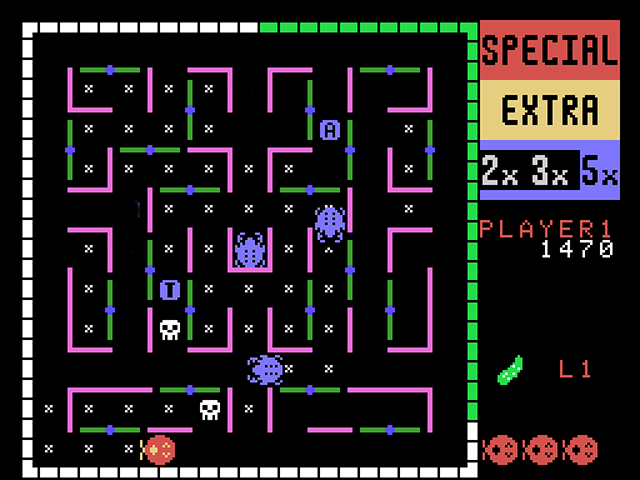
The success of Pac-Man in the early ’80s naturally led the way for countless imitators. Lady Bug from Universal Games was a maze-based game that gave players the goal of eating as many dots as possible while avoiding deadly enemies. Having said that, there were a few areas in which Lady Bug differentiated itself from the more-famous Pac-Man. For instance, there are “skull” icons found within the mazes that can prove deadly to both the player and the enemy characters. More significantly, the inclusion of a “pinball-inspired” scoring system really helped define the game. By eating special “heart” items, players can effectively double, triple, or even quadruple their scores. These score multipliers add an element of strategy to the game and challenge players to think ahead instead of merely relying on reflexes. In the case of Lady Bug, the gameplay goes much deeper than mere survival, and the ability to shift various gates around essentially gives players a chance to change the mazes themselves. Lady Bug was not a hit in the arcades, but the stellar ColecoVision port was well received. Like so many other pre-crash titles, the game seems to have been completely forgotten.
9
Eggomania
Atari 2600 (1982)
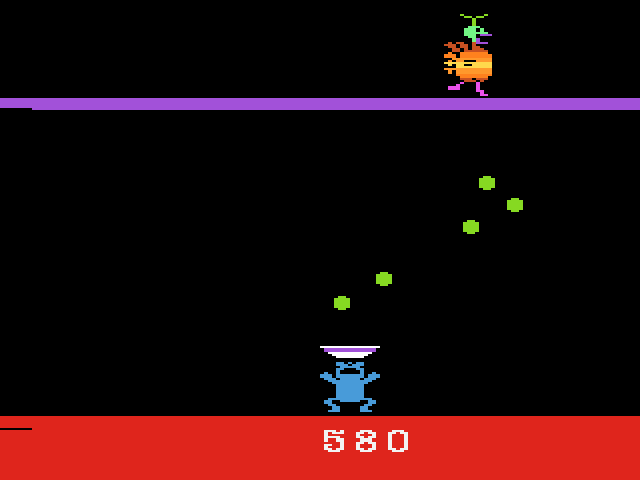
Kaboom! was recognized on this site as the greatest Atari 2600 game of all time, and Eggomania was clearly inspired by it. Both games make use of the Atari 2600’s paddle controller and challenge players to catch objects that fall from the top of the screen. In Kaboom!, players are required to catch bombs, while Eggomania tasks players to catch eggs that a chicken is laying. Electronic Games suggested that Eggomania improved upon Kaboom! and rightfully praised its animation and colorful graphics. Eggomania sets itself apart from Kaboom! by allowing players to go on the offensive. After catching the eggs, players turn them into weapons and attempt to pelt the chicken between rounds. It’s not nearly as intense as Kaboom!, but it’s a little more accessible. Eggomania was developed by US Games, which was the video game division of Quaker Oats. They developed 14 Atari 2600 games in total, but none of them were successful and the division was axed altogether. Quaker Oats is often used as an example of a company who viewed video games as a quick cash grab, but Eggomania was a legitimately good game that had a lot of effort behind it.
8
Seaquest
Atari 2600 (1983)
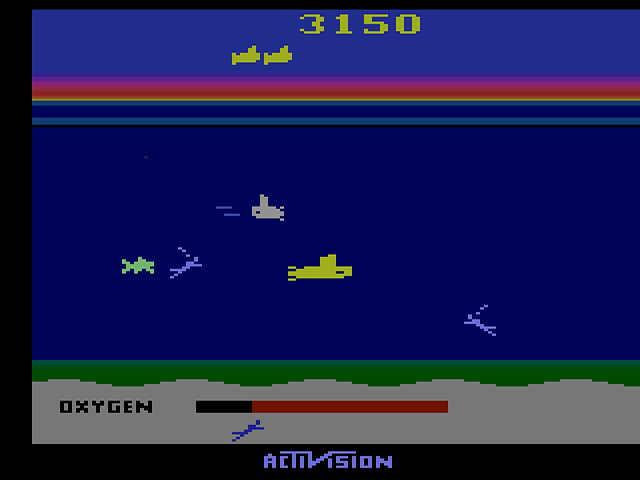
The first thing most people will notice about Seaquest is its bright and colorful visuals. Many games from the era used stark, black backgrounds that seemed downright lifeless at times. The blue ocean, yellow submarine, and gradient sunset give Seaquest a lot of personality and really help the game stand out. Rest assured, Seaquest isn’t being listed here simply because it has colorful graphics. The game gives players a surprising number of objectives to complete in each level, especially when you consider that the action all takes place on a single screen. For instance, players will have to rescue divers, avoid enemy torpedoes, keep an eye on oxygen levels, and blast the ever living heck out of giant sharks. The name is a bit of a misnomer, however, as their really isn’t much of a “quest” involved. Nevertheless, it’s a fun game and yet another example that proves that Activision knew the Atari 2600 better than any other developer.
7
Beamrider
Multiplatform (1983)
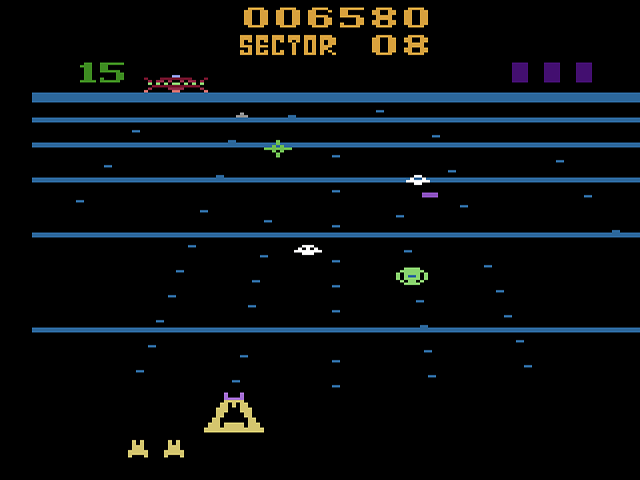
Space-based shooters were extremely popular in the early ’80s, and Beamrider was one of the best. Since it was released for the home market right before the video game crash of 1983, the game didn’t see the same level of success that similar arcade games did. The main gameplay mechanics in Beamrider simply require players to move a ship along the bottom of the screen and blast arrays of approaching enemy fighters. In that sense, it’s not that much different from Space Invaders or Galaga. Although the gameplay is strictly 2D, Beamrider creates the feeling of a 3D game by making obstacles and enemy fighters appear larger as they get closer to you. The animation is surprisingly smooth for the era, and the game creates a real sense of speed. There’s nothing groundbreaking about a game that lets you save the world from invading space aliens, but the presentation in Beamrider was impressive and you have to admire Activision’s technical prowess.
6
Mouse Trap
Multiplatform (1981)
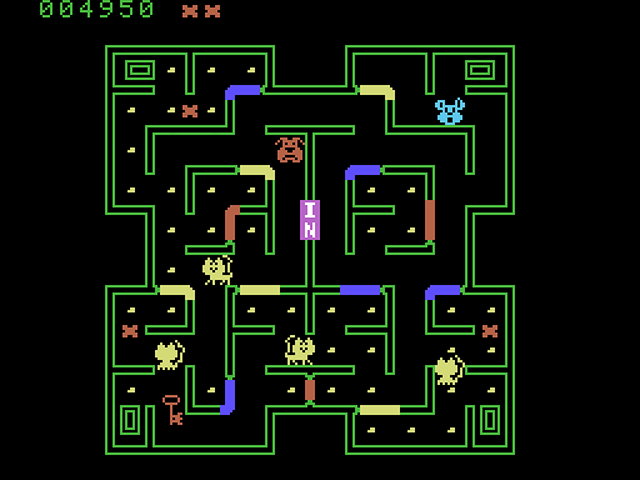
At first glance, Exidy’s Mouse Trap looks like an uninspired Pac-Man clone. Indeed, the similarities are apparent from the very beginning. In the game, players assume the role of a mouse and have the objective of navigating through a maze and eating cheese along the way. Unfortunately, the maze is also populated by a number of cats who are looking for a meal. By eating special bones that are sporadically placed within the maze, players can transform into dogs and turn the tables on their feline foes. Players can even store extra bones to use at their discretion. Perhaps the most interesting aspect of Mouse Trap is the ability to control various doors that are found within the maze. By using the ColecoVision’s keypad, players can open and close the doors at their leisure. This allows players to create escape routes and can even provide opportunities to trap enemies into confined spaces! The ability to open and close various doors effectively gives players the ability to change the mazes themselves. Ultimately, this helps Mouse Trap differentiate itself from Pac-Man. Although Coleco released versions of Mouse Trap on the Atari 2600 and Intellivision, the most accurate arcade port was reserved for the ColecoVision itself.
5
Thunder Castle
Intellivision (1982)
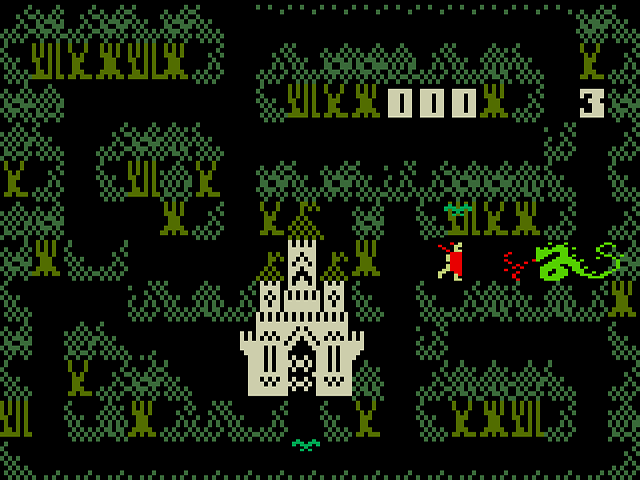
The console was home to notable dungeon crawlers like Advanced Dungeons & Dragons and Tower of Doom, but I turn to Thunder Castle when I want my fix of high fantasy on the Intellivision. The game contains three levels with their own unique settings and objectives. Players are challenged to protect a castle from giant fire-breathing dragons, battle invading wizards in a courtyard, and dispatch pitchfork-wielding imps in a skull-filled lair. Players will have various items at their disposal throughout the game – including necklaces that increase speed, rings that teleport them to random locations, and crowns that stop their enemies in their tracks. At its core, Thunder Castle is a typical maze game. The layouts of the maze are constantly changing, however, so an element of randomness is present. Thunder Castle has some of the best production values of any Intellivision game, and the chiptune renditions of classical symphonies accentuate the fantasy themes.
4
Up’n Down
Multiplatform (1983)
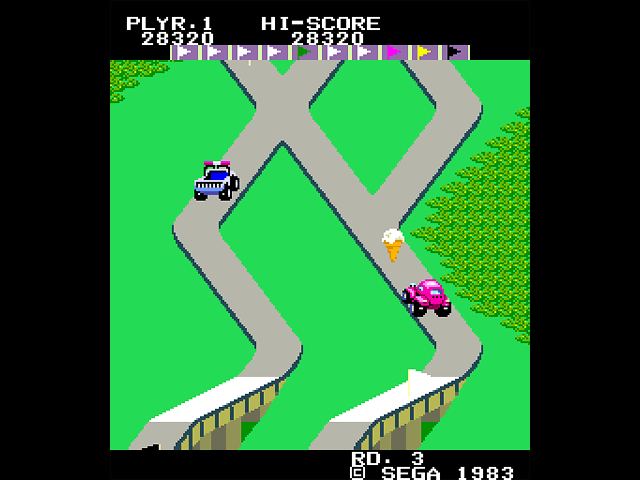
There is a lot to love about Sega’s Up’n Down. The graphics are bright and colorful, the music is delightfully whimsical, and the gameplay is completely unconventional. The objective of the game is to drive along a series of criss-crossing roads in an attempt to collect as many flags as possible. This is easier said than done, however, because the said roads are extremely narrow and full of oncoming traffic. Fortunately, the player’s vehicle is an extraordinary Volkswagen Beetle knockoff that lets them avoid head-on collisions by simply jumping over the oncoming cars! This is not a license to be reckless though. If players attempt to jump over an oncoming vehicle while approaching a turn, they may end up flying right off the road. Up’n Down was neither the most popular nor most realistic racing game of its era, but it was arguably the most fun. I wish real cars had the ability to jump.
3
Dodge ‘Em
Atari 2600 (1980)
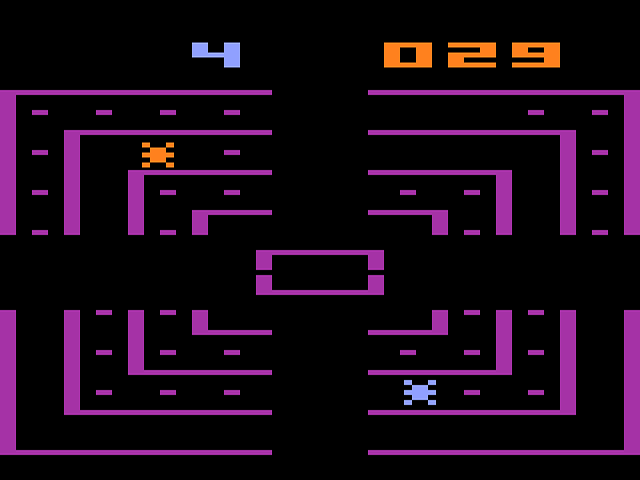
Dodge ‘Em employs a top-down perspective and looks like a typical dot-eating maze game at first, but it’s a lot more intense than you might imagine. The entire point of the game is to drive around the screen in a counter-clockwise fashion and avoid head-on collisions with rival vehicles who approach from the opposite direction. This is easier said than done. Players have four different lanes to drive in, but they can only change lanes when there is a gap in the roadway. These narrow gaps only exist at the top, bottom, left, and right of the screen, and players are committed to their lane at all other times. This leads to inevitable collisions, so the only way to guarantee victory is to successfully predict which lane your opponent is going to take and avoid it like the plague. The entire thing could be described as an elaborate game of chicken, and it’s especially fun when your competing against a human opponent. Dodge ‘Em is easily one of the most overlooked games ever developed by Atari, and it’s seldom mentioned in the same light as some of their other classics.
2
Pepper II
Multiplatform (1982)
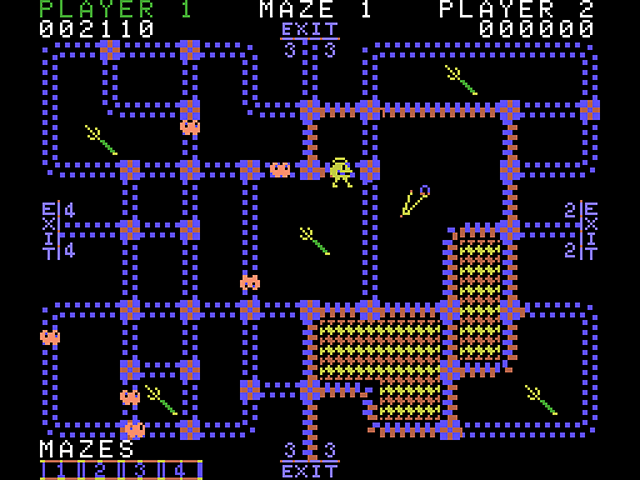
If Pac-Man and Qix had a kid (which they obviously did) the result would end up looking a little something like Exidy’s Pepper II. The premise is simple, and the objective of the game involves guiding an angel named Pepper through various mazes in an attempt to close off (or zip up) various rooms. Closing off larger areas will earn more points, but it will also make you more susceptible to the roaming eyes that oppose you. At the same time, annoying enemies roam the course trying to unzip the areas you have already taken care of. Fortunately, you can fight back by obtaining power-ups. Closing off an area containing a pitchfork, for instance, will temporarily turn your character into a devil and grant you the ability to eliminate your foes. With only four screens to play through, it’s not the deepest game in the world. The game is fun from the moment you start playing, however, since there’s no real learning curve. Why this game was called Pepper II, I’ll never know. Despite its name, there was no predecessor named Pepper, Pepper I, or even Pepper Origins.
1
The Castles of Dr. Creep
Multiplatform (1984)
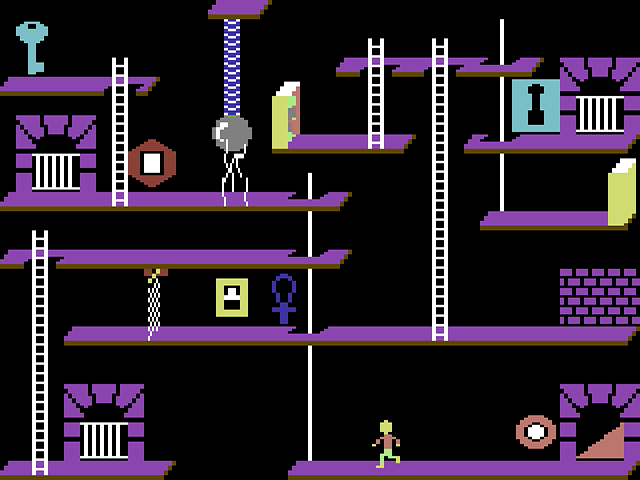
The Castles of Dr. Creep is a platform game with a heavy emphasis on puzzle elements. The game takes place in over a dozen castles owned and operated by Dr. Creep himself, and the player’s objective is to escape from each of them. The stages are filled with conveyor belts, force fields, and laser guns, but players can avoid these obstacles by using ladders, sliding poles, and teleporting machines. The castles are inhabited by myriads of mummies and Frankenstein monsters, and a lot of creativity is needed in order to deal with them. Instead of attacking enemies or even avoiding them, it’s often necessary to lure them into traps. Dr. Creep had an affinity for trapdoors and lightning machines, and these contraptions can ultimately be used against his own monstrous creations. The Castles of Dr. Creep features colorful graphics, amazing music, and some of the most unique level designs in the genre. The best aspect about the game is that it allows for two-player co-op. The option to collaborate with a second player makes the game more approachable and a lot more fun.

Do you agree with this list? Let us know what you think by leaving a comment below. Your opinion matters!